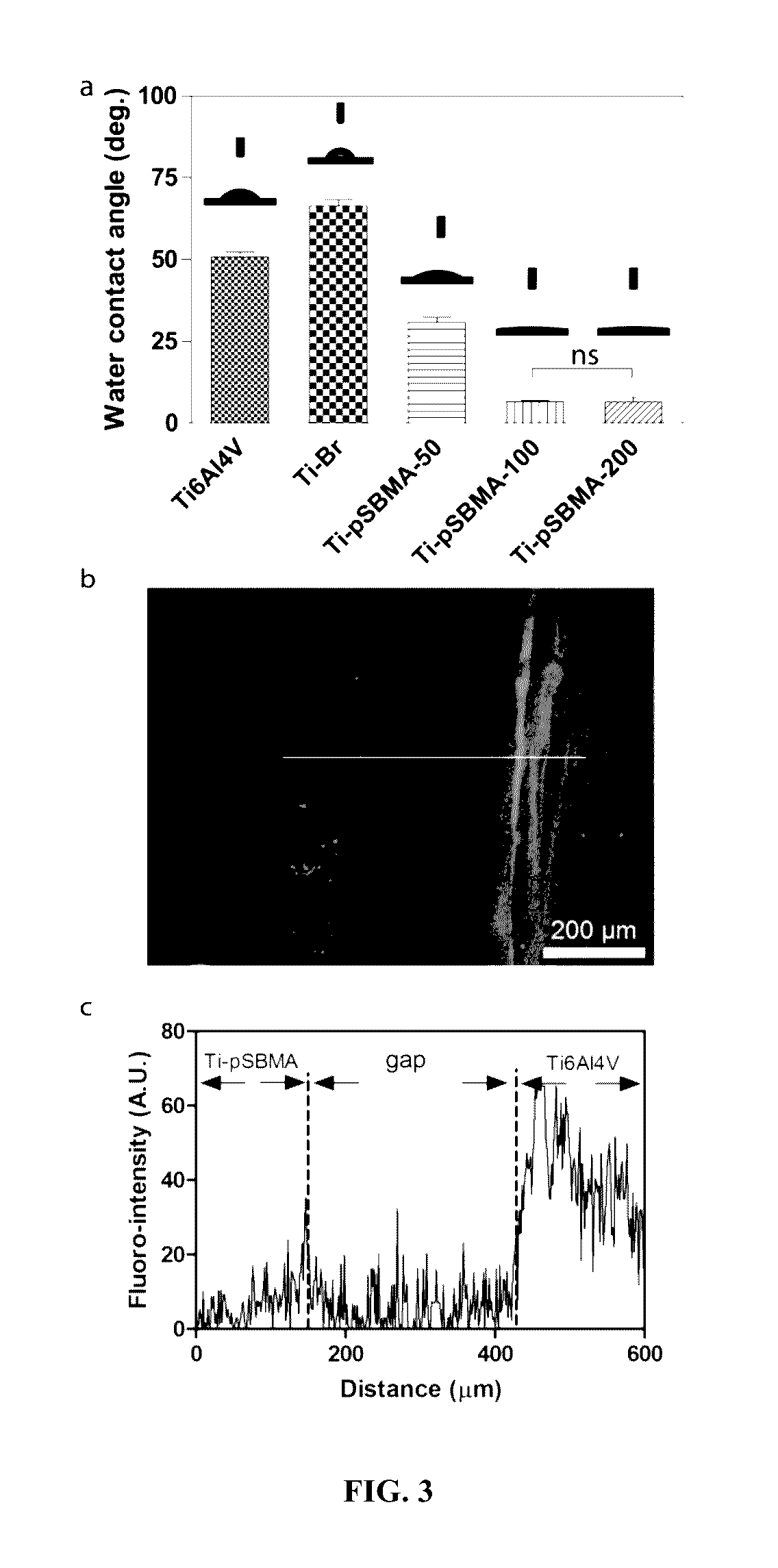Compositions and methods for surface mineralization
a technology of surface mineralization and composition, applied in the direction of prosthesis, pharmaceutical delivery mechanism, coating, etc., can solve the problems of early implant failure, unsuitable “line of sight technique” for coating porous substrates, and inability to adequately integrate tissue and implant components, etc., to promote surface mineralization of hydroxyapatite, enhance surface mineralization coverage, and increase surface mineralization coverage
- Summary
- Abstract
- Description
- Claims
- Application Information
AI Technical Summary
Benefits of technology
Problems solved by technology
Method used
Image
Examples
examples
[0090]The experimental results demonstrates the preparation of well-controlled zwitterionic pSBMA polymers (PDI100% from those achieved with unmodified Ti6Al4V substrate, but also significantly improved the bonding affinity of the surface apatite minerals to the metallic substrate.
Materials
[0091][2-(Methacryloyloxy)ethyl]dimethyl-(3-sulfopropyl)ammonium hydroxide (SBMA, 97%), ethyl α-bromoisobutyrate (EBiB, 98%), α-bromoisobutyryl bromide (BiBB, 98%), 2,2′-bipyridyl (BPY, 97%), copper(I) bromide (CuBr, 99.999%), 1-hexyl-3-methylimidazolium chloride (HMImCl, 97%), 2,2,2-trifluoroethanol (TFE, 99%), bromotrimethylsilane (BTMS, 97%), anhydrous methanol (99.8%), anhydrous dichloromethane (DCM, 99.8%), anhydrous hexane (95%) and acetone (99.9%) were purchased from Sigma-Aldrich and used as received. Triethylamine (TEA, 99.5%, Sigma-Aldrich) was dried by calcium hydride (CaH2, 99.99%, Sigma-Aldrich) and distilled prior to use. Diethyl (hydroxymethyl)phosphonate (P—OH, 98%, TCI America) wa...
PUM
| Property | Measurement | Unit |
|---|---|---|
| Fraction | aaaaa | aaaaa |
| Fraction | aaaaa | aaaaa |
| Mass | aaaaa | aaaaa |
Abstract
Description
Claims
Application Information
 Login to View More
Login to View More - R&D
- Intellectual Property
- Life Sciences
- Materials
- Tech Scout
- Unparalleled Data Quality
- Higher Quality Content
- 60% Fewer Hallucinations
Browse by: Latest US Patents, China's latest patents, Technical Efficacy Thesaurus, Application Domain, Technology Topic, Popular Technical Reports.
© 2025 PatSnap. All rights reserved.Legal|Privacy policy|Modern Slavery Act Transparency Statement|Sitemap|About US| Contact US: help@patsnap.com



